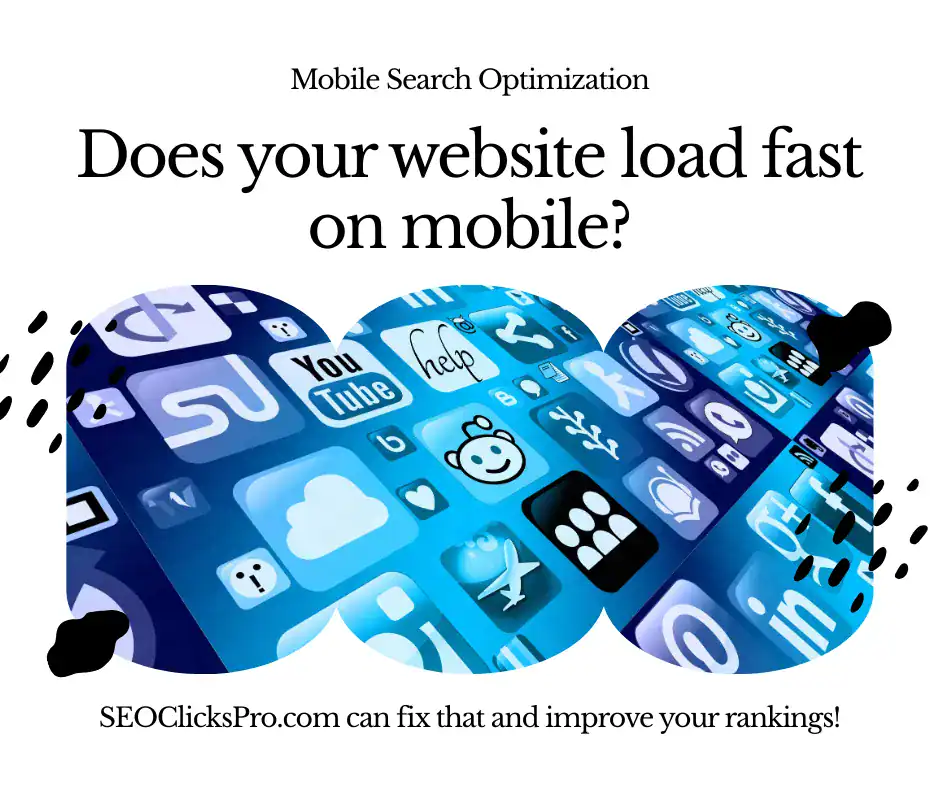Strategic Digital Marketing for Financial Services: An Insider’s Perspective
The financial services industry and therefore the digital marketing for financial services industry operates under unique constraints that fundamentally differentiate its digital marketing requirements from other sectors. With 15 years of direct experience working within financial institutions—from boutique wealth management firms to large banking operations—the team at SEO Clicks Pro possesses intimate knowledge of the regulatory frameworks, compliance requirements, and competitive dynamics that shape every marketing decision in this highly-regulated space.
Unlike consumer goods or SaaS companies, financial services marketing must navigate FINRA regulations on testimonials and endorsements, SEC guidelines on investment performance claims, state insurance licensing requirements, and strict disclosure obligations—all while competing for client trust in an industry where 68% of consumers research financial products online before making contact. This complexity demands specialized expertise beyond general digital marketing knowledge, requiring practitioners who understand both marketing strategy and financial services operations at a granular level.
1. Content Marketing for Financial Services: Beyond Basic Education
Content marketing in financial services serves multiple strategic objectives beyond lead generation: establishing fiduciary credibility, demonstrating specialized expertise in complex financial instruments, addressing specific client concerns around market volatility and retirement planning, and navigating regulatory requirements for balanced presentation of risks and potential returns.
Creating Compliant, High-Value Content Assets
Financial services content must balance educational value with regulatory compliance—a challenge requiring deep industry knowledge. Through our 15 years in financial services environments, we’ve learned that effective content addresses specific client pain points while adhering to disclosure requirements:
In-Depth Articles and Thought Leadership: Develop comprehensive analyses addressing sophisticated financial topics—estate planning strategies for high-net-worth individuals, tax-loss harvesting techniques, qualified retirement plan distributions, 529 plan optimization, required minimum distribution planning, and Social Security claiming strategies. These 2,500-4,000 word pillar articles establish subject matter expertise while targeting long-tail keywords like “estate planning strategies for business owners” or “tax-efficient withdrawal strategies for retirees” that indicate high purchase intent.
Case Studies with Compliance Considerations: Financial services case studies require careful anonymization and must avoid appearing as testimonials or endorsements in FINRA-regulated contexts. Present client scenarios using composite examples that demonstrate planning methodologies, strategic approaches, and problem-solving capabilities without making specific performance claims or guarantees. For example: “A hypothetical couple approaching retirement with $2M in retirement assets and $500K in taxable accounts presents opportunities for strategic Roth conversions, tax-bracket management, and Social Security optimization.”
Whitepapers and Research Reports: Original research examining topics like “Impact of Interest Rate Changes on Retirement Portfolio Sustainability” or “Analysis of 529 Plan Performance Across State Sponsors” provides linkable assets attracting backlinks from financial media, establishes thought leadership, and serves sales teams as credibility-building tools during prospect conversations.
Educational Video Content: Video explanations of complex financial concepts—explaining qualified charitable distributions, demonstrating portfolio rebalancing strategies, or walking through estate planning document requirements—serve multiple purposes: improving time-on-site metrics for SEO, providing shareable social media content, and addressing different learning style preferences. Videos must include required disclosures and risk warnings based on content type and regulatory jurisdiction.
SEO Optimization for Financial Services Keywords
Financial services SEO requires understanding high-value keyword categories with significant commercial intent:
Fiduciary and Service-Type Keywords: “fee-only financial advisor [city],” “fiduciary financial planner near me,” “certified financial planner [location]”—these indicate prospects actively seeking specific service models and ready for consultation.
Product-Specific Keywords: “401k rollover options,” “whole life insurance vs term,” “backdoor Roth IRA strategy,” “irrevocable life insurance trust”—searchers seeking information on specific financial products or strategies.
Life Event Keywords: “financial planning after divorce,” “inheriting retirement accounts,” “selling business financial planning,” “disability insurance for physicians”—capturing prospects at decision-making inflection points.
Optimization extends beyond on-page keyword usage to encompass schema markup implementation (Local Business, Financial Service, FAQ Page schema for featured snippets), technical SEO addressing site speed and Core Web Vitals, and strategic internal linking connecting related financial topics to demonstrate topical authority clusters around retirement planning, estate planning, and investment management.
Content Format Diversification
Financial services audiences consume information across multiple formats based on complexity level and learning preferences:
Long-Form Educational Blogs: Comprehensive guides (1,500-3,000 words) targeting informational keywords like “how to choose a financial advisor” or “understanding required minimum distributions”—serving top-of-funnel awareness stage prospects early in research.
Financial Calculators and Interactive Tools: Retirement planning calculators, Roth conversion analyzers, Social Security claiming strategy tools, and college savings calculators provide immediate utility, generate backlinks from financial planning communities, and capture email addresses for lead nurturing. These tools must include appropriate disclaimers about providing general information rather than personalized advice.
Infographics and Visual Content: Complex financial concepts—showing how Roth conversion ladders work, illustrating qualified charitable distribution benefits, or visualizing tax bracket management strategies—benefit from visual explanation. These assets gain social shares and attract backlinks from financial media outlets.
Podcasts and Webinar Series: Regular podcast content interviewing industry experts, discussing market trends, or analyzing financial planning topics builds audience relationships over time while providing content for SEO (podcast transcripts), social media promotion, and thought leadership establishment. Webinars on timely topics (“2025 Tax Law Changes and Planning Strategies”) generate qualified leads through registration while demonstrating expertise.
2. Social Media Strategy for Financial Services: Compliance-First Engagement
Social media for financial services requires navigating platform-specific content guidelines, FINRA’s social media communications rules, and state insurance regulations—challenges we intimately understand from our years working within these constraints.
Platform Selection Based on Target Demographics
Different financial services niches align with specific social platforms based on audience demographics and content format:
LinkedIn for B2B and Professional Services: Wealth managers, financial advisors, and institutional services find LinkedIn optimal for reaching business owners, corporate executives, and high-net-worth professionals. Share thought leadership articles, company updates, market commentary, and professional accomplishments. LinkedIn’s professional context supports longer-form content and nuanced financial discussions more effectively than consumer-focused platforms.
Facebook for Community Building: Independent financial advisors and regional firms use Facebook for community engagement, client education through live video, and local awareness building. Facebook groups facilitate client community development, peer-to-peer recommendations, and ongoing engagement beyond transactional relationships. Advertising capabilities enable precise geographic and demographic targeting for local wealth management practices.
Twitter/X for Real-Time Market Commentary: Financial professionals using Twitter for thought leadership, market analysis, and industry networking must balance timely commentary with compliance review requirements. Pre-approved content libraries enable responsive engagement within regulatory parameters.
YouTube for Educational Video Series: Long-form educational content explaining financial planning concepts, market analysis, and strategy implementation reaches prospects through search discovery while establishing video-based thought leadership. YouTube SEO optimization targets financial keywords with video search intent.
Compliance-Conscious Content Strategy
From our 15 years navigating financial services marketing, we’ve developed systematic approaches to compliant social media management:
Pre-Approved Content Libraries: Develop extensive libraries of pre-approved posts, graphics, and responses covering common topics, market scenarios, and client questions—enabling timely social media presence without per-post compliance review bottlenecks.
Clear Disclosure Protocols: Implement consistent disclosure language for hypothetical scenarios, performance discussions, and educational content. Use standardized disclaimers appropriate to content type and regulatory framework (FINRA, SEC, state insurance departments).
Engagement Guidelines and Response Protocols: Train team members on compliant social media interaction—avoiding specific investment recommendations in public forums, recognizing when conversations require private channels, and escalating compliance-sensitive inquiries appropriately.
Archiving and Recordkeeping Systems: Implement systems capturing all social media communications for regulatory examination requirements—FINRA requires retention of all business-related communications for specified periods.
Engagement Tactics Within Regulatory Boundaries
Educational Content Series: Weekly educational posts explaining financial concepts (dollar-cost averaging, tax-loss harvesting, estate planning basics) provide consistent value while remaining within regulatory guidelines for general educational content versus specific advice.
Market Commentary with Appropriate Context: Share perspectives on market trends, economic indicators, or policy changes while including appropriate disclaimers about not constituting investment advice and noting importance of individual circumstances in financial decisions.
Client Success Stories (Appropriately Structured): Share client appreciation without triggering testimonial restrictions—focus on planning approaches and methodologies rather than specific returns or outcomes. Use composite scenarios demonstrating planning value without attributing to specific clients.
Interactive Engagement Opportunities: Polls about financial planning priorities, Q&A sessions on general financial topics, and webinar invitations foster engagement while maintaining compliance when structured appropriately. Avoid specific investment recommendations or advice in public forums.
3. Email Marketing for Financial Services: Personalization with Compliance
Email marketing remains the highest-ROI channel for financial services, generating average returns of $42 per dollar spent when executed with sophisticated segmentation and personalization—tactics we’ve refined through years of hands-on implementation in financial services contexts.
Strategic Segmentation Based on Client Lifecycle and Financial Situation
Prospect Nurturing Tracks: Segment prospects by initial inquiry type (retirement planning, investment management, estate planning), engagement level (content downloads, webinar attendance), and demographic attributes (age, asset level, employment status). Deliver targeted educational content addressing specific concerns relevant to each segment.
Client Communication Tracks: Segment existing clients by service model (comprehensive planning vs. investment-only), portfolio size, life stage (pre-retirement, early retirement, legacy planning), and engagement level. Tailor communications around review scheduling, tax planning reminders, required minimum distribution notifications, and relevant educational content.
Reactivation Campaigns: Identify dormant prospects who engaged previously but didn’t convert, and lapsed clients who haven’t scheduled recent reviews. Deploy targeted reactivation sequences highlighting new services, addressing common objections, or offering specialized consultations around tax season or year-end planning.
Personalization Beyond First Names
Advanced personalization leverages client data and behavioral signals:
Behavioral Triggers: Send automated emails triggered by specific actions—downloading retirement planning guide triggers retirement-focused nurture sequence; visiting college planning pages triggers 529 plan educational series; viewing advisor bios triggers introduction email with scheduling invitation.
Financial Milestone Recognition: Acknowledge significant milestones (approaching age 59½ enabling penalty-free IRA withdrawals, turning 65 and Medicare eligibility, approaching age 73 and required minimum distributions) with timely guidance addressing planning considerations.
Market-Triggered Communications: During market volatility, send reassuring educational content to clients reinforcing long-term planning perspectives, reviewing portfolio positioning relative to risk tolerance, and offering additional consultation availability—demonstrating proactive client service.
Compliance-Approved Newsletter Frameworks
Monthly Market Commentary: Provide balanced perspectives on market conditions, economic indicators, and policy developments while maintaining appropriate disclaimers and avoiding specific investment recommendations for heterogeneous audiences with varying circumstances.
Quarterly Tax Planning Updates: Share timely tax planning considerations—contribution deadline reminders, estimated tax payment schedules, year-end strategies, and legislative updates affecting retirement accounts, estate planning, and investment taxation.
Seasonal Financial Planning Reminders: Distribute seasonal content addressing timely topics—beginning of year: reviewing beneficiaries and updating financial plans; spring: tax filing considerations and Roth conversion opportunities; fall: year-end tax planning and charitable giving strategies; year-end: contribution deadline reminders and required minimum distribution checklists.
4. Data Analytics for Financial Services: Measuring What Matters
Financial services marketing analytics must extend beyond standard digital metrics to encompass business development metrics, client acquisition costs by channel, and lifetime value analysis—perspectives we gained from managing marketing within financial advisory practices where every marketing dollar requires ROI justification.
Client Acquisition Metrics and Channel Attribution
Cost Per Lead by Source: Track marketing costs and lead generation volume by channel (organic search, paid search, social media, email campaigns, referral sources, seminars/workshops) calculating cost per lead. Financial services typically sees $100-500 cost per qualified lead depending on service type and market competition.
Lead-to-Client Conversion Rates: Monitor conversion from initial inquiry to scheduled consultation to becoming client—identifying friction points in conversion process. Typical financial services conversion rates: 30-40% of inquiries schedule consultations; 40-60% of consultations convert to clients.
Client Acquisition Cost: Calculate total marketing and sales costs divided by new clients acquired. Compare against client lifetime value to ensure sustainable economics. Financial advisory practices typically target client acquisition costs of 10-20% of first-year revenue from new clients.
Channel-Specific ROI: Attribute new client revenue to marketing channels driving initial engagement using CRM tracking and multi-touch attribution modeling. Organic search typically provides highest lifetime ROI despite longer payback periods; paid search delivers faster results with higher ongoing costs.
Client Behavior and Engagement Analytics
Website Behavior Analysis: Track which content topics drive longest engagement, which pages precede consultation requests, and which content gaps exist based on search queries reaching site without finding relevant content. Google Analytics event tracking monitors calculator usage, document downloads, and video views indicating high engagement.
Email Engagement Patterns: Analyze which email content topics generate highest open rates and click-throughs informing future content development. Monitor engagement degradation over time identifying when re-engagement campaigns should trigger.
Client Portal Usage Analytics: Track digital service adoption among existing clients—portal login frequency, document upload usage, online meeting scheduling adoption—identifying opportunities for enhancing digital client experience and improving operational efficiency.
Predictive Analytics for Client Development
Lead Scoring Models: Implement predictive lead scoring assigning point values to demographic attributes (age, stated assets, employment status) and behavioral signals (pages viewed, content downloaded, email engagement) identifying highest-probability conversion prospects for prioritized outreach.
Lifetime Value Prediction: Model expected lifetime value based on initial client attributes (age at onboarding, initial portfolio size, service model selected) enabling marketing investment decisions and client segmentation strategies.
Churn Risk Identification: Monitor engagement patterns identifying clients showing early warning signs of potential attrition (declining portal usage, missed review meetings, reduced email engagement) triggering proactive retention outreach.
5. User Experience and Digital Accessibility for Financial Services
Financial services websites require exceptional user experience balancing comprehensive information delivery with intuitive navigation—challenges we understand from building and optimizing financial advisory sites throughout our careers.
Mobile-First Design for Financial Services
With 62% of financial services website traffic originating from mobile devices, responsive design is non-negotiable. Financial services mobile experiences must address specific user needs:
Account Access and Portfolio Review: Clients accessing account information or reviewing portfolio performance on mobile require clear navigation to login portals, straightforward authentication processes, and mobile-optimized account dashboards displaying key metrics prominently.
Appointment Scheduling: Streamline consultation scheduling through mobile-friendly calendar integration enabling prospects to book initial consultations and clients to schedule review meetings without desktop access.
Educational Content Consumption: Format long-form content for mobile readability through appropriate typography, generous white space, and content chunking with descriptive headers enabling scanning and section navigation.
Click-to-Call and Contact Features: Prominently display phone numbers with click-to-call functionality and live chat options enabling immediate connection when prospects have questions during mobile research sessions.
Streamlined Navigation and Information Architecture
Financial services websites typically contain extensive content across multiple service areas, team member profiles, educational resources, and client resources—requiring thoughtful information architecture:
Service-Focused Navigation: Organize primary navigation around client needs and service offerings (Retirement Planning, Investment Management, Estate Planning, Tax Planning) rather than internal organizational structure.
Audience Segmentation: Provide navigation paths for distinct audiences (Individuals and Families, Business Owners, Retirees, Corporate Services) leading to content addressing specific needs and concerns of each segment.
Intuitive Resource Centers: Organize educational content through filterable resource libraries enabling visitors to browse by topic area (retirement, investments, taxes, estate planning) and content type (articles, calculators, videos, guides).
Clear Calls-to-Action: Guide visitors toward desired actions (schedule consultation, download planning guide, subscribe to newsletter) through prominent, strategically-placed CTAs without creating cluttered or pushy user experiences.
Accessibility and Inclusive Design
Financial services accessibility extends beyond ADA compliance to encompass inclusive design serving diverse populations:
WCAG 2.1 Compliance: Implement accessibility standards including sufficient color contrast ratios, keyboard navigation support, screen reader compatibility, alt text for images, and semantic HTML structure enabling assistive technology usage.
Plain Language Communication: Balance technical accuracy with accessible language avoiding unnecessary jargon or explaining complex terminology clearly—ensuring educational content serves clients across financial literacy levels.
Multilingual Support: Serve multilingual communities through translated content and bilingual advisor profiles where appropriate based on local demographics and market opportunities.
Measuring Success in Financial Services Digital Marketing
From our 15 years managing marketing within financial practices, we know financial services marketing success requires tracking both digital engagement metrics and business development outcomes:
Lead Generation Volume and Quality: Monitor not just lead quantity but quality indicators—are inquiries within target client profile? Do they meet minimum asset thresholds? Are they seeking services your firm provides?
Consultation Conversion Rates: Track percentage of leads converting to scheduled consultations and percentage of consultations converting to clients—identifying whether issues exist in lead qualification, scheduling processes, or consultation effectiveness.
Client Acquisition Cost by Channel: Calculate total marketing investment by channel divided by new clients acquired through each channel—informing budget allocation decisions and channel strategy optimization.
Organic Search Performance: Monitor keyword rankings for priority search terms, organic traffic growth trajectory, and organic traffic quality through engagement metrics and conversion rates.
Content Engagement Metrics: Measure which content topics generate longest time on site, lowest bounce rates, highest social shares, and most inbound links—informing content development priorities.
Email Marketing Performance: Track open rates, click-through rates, and conversion rates by campaign type and audience segment—optimizing send timing, subject lines, content, and calls-to-action.
Client Lifetime Value: Ultimate marketing success metric—are acquired clients generating sufficient revenue to justify acquisition costs? What’s the payback period on marketing investment?
Conclusion: Strategic Digital Marketing Requires Financial Services Expertise
Implementing effective digital marketing for financial services demands far more than general marketing knowledge—it requires intimate understanding of regulatory frameworks, client psychology around financial decisions, competitive dynamics in wealth management markets, and operational realities of financial advisory practices. With our team’s 15 years of direct financial services experience spanning boutique advisory firms to institutional wealth management operations, SEO Clicks Pro brings this insider perspective to every client engagement.
We understand the balance between compliance requirements and compelling marketing, the importance of positioning strategies in competitive wealth management markets, the long sales cycles and relationship-building nature of financial services client acquisition, and the integration points between marketing systems and financial planning software enabling seamless client experiences.
Financial institutions partnering with marketers lacking this industry-specific expertise risk compliance violations, wasted marketing investment on inappropriate channels or messaging, missed opportunities for strategic differentiation, and failure to connect marketing activities to business development outcomes. The financial services landscape continues evolving—rising interest rates affecting investment strategies, generational wealth transfers creating new client acquisition opportunities, increasing regulatory scrutiny of digital marketing practices, and technological innovation enabling enhanced client experiences—requiring marketing partners who understand these dynamics and adapt strategies accordingly.
By focusing on compliant content marketing establishing thought leadership, strategic social media engagement within regulatory boundaries, sophisticated email marketing driving client acquisition and retention, data-driven decision making connecting marketing investment to business outcomes, and user experience optimization serving increasingly digital-first clients, financial institutions position themselves for sustainable growth in competitive markets.
Ready to partner with a digital marketing team that truly understands financial services from the inside? SEO Clicks Pro’s 15 years of financial services experience informs every strategy we develop, every piece of content we create, and every campaign we execute. Discover how industry-specific expertise translates to better compliance, more effective positioning, and measurable business development results through our complimentary digital marketing audit for financial services firms.





















